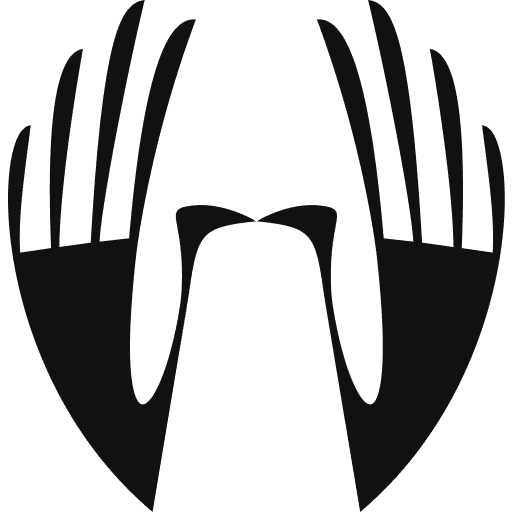Paralucent Stencil
Paralucent Stencil Extra Light
Paralucent Stencil Medium
Paralucent Stencil Heavy
Typography is the design and arrangement of the simple graphic glyphs that embody language. A typeface conveys tone and emotion, often before a single word is read. Each character is shaped by centuries of use, misuse, and reinvention; these glyphs aren’t static, they mutate to reflect shifts in culture and technology. Type carries the fossil imprints of its evolution: the serifs of the Roman chisel, the flourish of pen on parchment, and more recently, the mechanical construction of pixels and Bézier curves. The anatomy of a typeface – its ascenders, bowls, terminals, x-height – operates as a kind of dialect; a grotesque sans and a humanist serif speak with very different inflections. Typography is rarely neutral – it encodes values like reliability, luxury, rebellion, sincerity, intimacy. True geometry rarely reads well to the human eye. Letters must often be subtly distorted to look correct. Circular letters like “O” overshoot the baseline and cap height to appear optically aligned; vertical and horizontal strokes differ in thickness to appear equal. These imperceptible adjustments are foundational to good type design.
Paralucent Stencil Extra Light
Typography is the design and arrangement of the simple graphic glyphs that embody language. A typeface conveys tone and emotion, often before a single word is read. Each character is shaped by centuries of use, misuse, and reinvention; these glyphs aren’t static, they mutate to reflect shifts in culture and technology. Type carries the fossil imprints of its evolution: the serifs of the Roman chisel, the flourish of pen on parchment, and more recently, the mechanical construction of pixels and Bézier curves. The anatomy of a typeface – its ascenders, bowls, terminals, x-height – operates as a kind of dialect; a grotesque sans and a humanist serif speak with very different inflections. Typography is rarely neutral – it encodes values like reliability, luxury, rebellion, sincerity, intimacy. True geometry rarely reads well to the human eye. Letters must often be subtly distorted to look correct. Circular letters like “O” overshoot the baseline and cap height to appear optically aligned; vertical and horizontal strokes differ in thickness to appear equal. These imperceptible adjustments are foundational to good type design.
Paralucent Stencil Medium
Typography is the design and arrangement of the simple graphic glyphs that embody language. A typeface conveys tone and emotion, often before a single word is read. Each character is shaped by centuries of use, misuse, and reinvention; these glyphs aren’t static, they mutate to reflect shifts in culture and technology. Type carries the fossil imprints of its evolution: the serifs of the Roman chisel, the flourish of pen on parchment, and more recently, the mechanical construction of pixels and Bézier curves. The anatomy of a typeface – its ascenders, bowls, terminals, x-height – operates as a kind of dialect; a grotesque sans and a humanist serif speak with very different inflections. Typography is rarely neutral – it encodes values like reliability, luxury, rebellion, sincerity, intimacy. True geometry rarely reads well to the human eye. Letters must often be subtly distorted to look correct. Circular letters like “O” overshoot the baseline and cap height to appear optically aligned; vertical and horizontal strokes differ in thickness to appear equal. These imperceptible adjustments are foundational to good type design.
Paralucent Stencil Heavy
About
The stencil form of Paralucent. Paralucent is versatile all-purpose modern sans, available in seven weights from Thin to Heavy, and in two widths, each with corresponding italics. Paralucent avoids some of the calligraphic quirks of Akzidenz or Helvetica and the cool precision of Univers to deliver an elegant, functional, yet warm design. There are two additions to the core 28-weight family: a three-weight stencil set, and a four weight text family. The text weights have been adjusted for use at small point sizes, and feature more open character shapes, looser inter-letter spacing for improved readability, and lining numerals for use in listings and tables. Prime attention has given to the negative space between characters, giving a more even “colour”, especially in text. For example, the J, L and T have shorter arms than comparable sans typefaces, while the M and W are wider. The A has a lower bar, opening up the interior counter. An unusually high lower-case x-height again helps to give a more even colour and improve legibility. Care has been taken to rationalise repeated elements like the tails on lower-case letters, or the Q and the “ear” of the g. ‘Ink traps’ are exaggerated incisions used to open up a letter's narrower internal angles, which can become clogged with ink, especially in small point sizes. Now largely redundant due to the high quality of modern print, they are still sometimes used as a stylistic quirk or design feature. Now that digital fonts are often reversed or outlined, or enlarged to enormous sizes, these can also lead to unexpected or obtrusive results. Paralucent takes these inevitable digital manipulations into account, and adds optical corrections without resort to ink traps. The family has been picked up by many UK and US publishers, featuring heavily in magazines like Loaded, Heat and TV Quick, as well as high-end coffee-table photography books and gallery websites.















